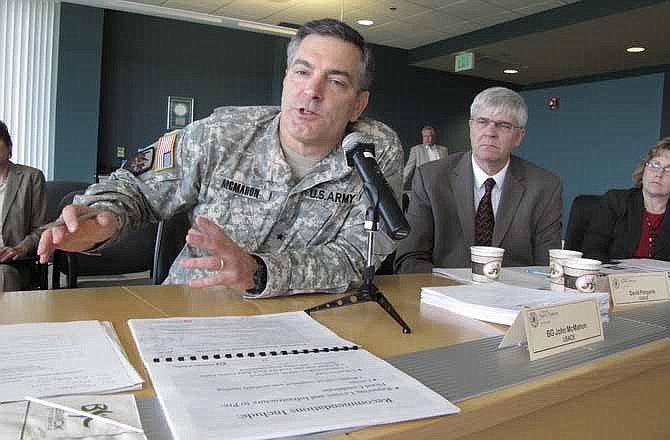BISMARCK, N.D. (AP) - Montana Gov. Brian Schweitzer had early warnings that last summer's Missouri River flooding would be severe. As he read accounts of downstream flooding in North Dakota, Schweitzer was getting state agency reports a large snow melt in western Montana's Rocky Mountains - a major source of Missouri water - had barely started.
Todd Sando, North Dakota's chief state engineer, had similar worries about the potential torrent of melting snow and the shrinking room for storing the water in the Missouri's reservoirs.
The information Schweitzer and Sando were relying on was collected by state agencies and was not readily available to others.
On Wednesday, a group of officials from eight Missouri River states endorsed providing more comprehensive water data that the U.S. Army Corps of Engineers can use to improve its flooding forecasts.
Last summer, heavy rains and snowfall contributed to a historic Missouri River flood that swamped portions of several river cities, broke through levees, overran an interstate highway and caused hundreds of millions of dollars' worth of damage from Montana to Missouri.
North Dakota Gov. Jack Dalrymple said the magnitude of last summer's Missouri flooding was too great for improved water data collection to make much difference.
Representatives from the eight states met Wednesday at Bismarck State College in Bismarck, N.D., to discuss flood management strategy. Dalrymple and South Dakota Gov. Dennis Daugaard attended in person, while Schweitzer took part by phone.
The group included officials from Montana, North Dakota, South Dakota, Iowa, Nebraska, Kansas, Missouri and Wyoming.
Brig, Gen. John McMahon, the top military commander of the U.S. Army Corps of Engineers division that includes the Missouri River, said state agencies, Indian tribes and colleges could help to improve the corps' ability to gather water data that could be used for flood predictions.
McMahon and Doug Kluck, regional climate services director for the National Oceanic and Atmospheric Administration, said the network would be useful for gathering information about frost depth and soil moisture content as well as the water content of snow.
"It not only helps flood prediction and knowledge, but it also helps the other side of the equation. When things dry out, we never know how dry it's really getting," Kluck said. "Everybody needs that kind of information."
McMahon said by year's end, the corps hopes to have more than $600 million in repairs to levees, dams and other Missouri River public works completed. The repairs are only for damage the agency knows about, and more problems could crop up as work continues, McMahon said.
McMahon said state and federal officials should also push for widening the river's flood channel, including longer levee setbacks from the river and buyouts for farm land within the Missouri's flood plain.
"From my perspective, what we should be about is investing in these repairs in smarter ways, so that we're doing things that make long-term sense, instead of just repairing as was," McMahon said.

